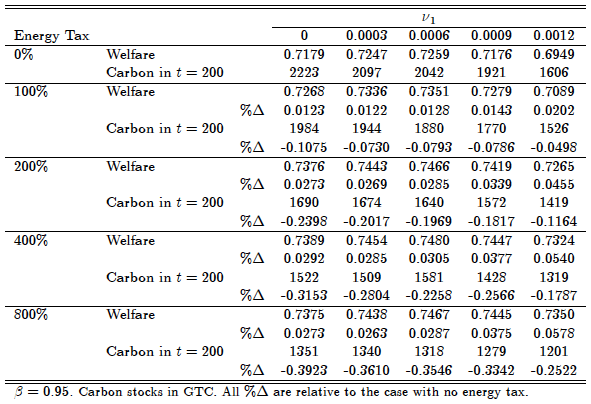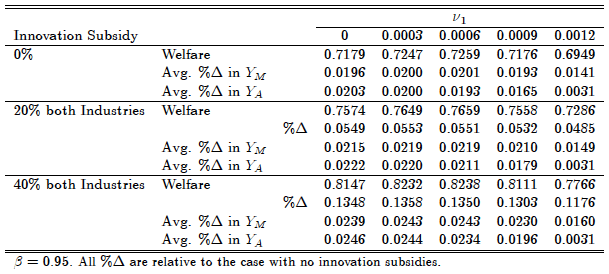| Author Name | Klaus DESMET (Universidad Carlos III) / Esteban ROSSI-HANSBERG (Princeton University) |
|---|---|
| Research Project | Theory and Empirics of Urban Growth and Spatial Structure |
| Download / Links |
This Non Technical Summary does not constitute part of the above-captioned Discussion Paper but has been prepared for the purpose of providing a bold outline of the paper, based on findings from the analysis for the paper and focusing primarily on their implications for policy. For details of the analysis, read the captioned Discussion Paper. Views expressed in this Non Technical Summary are solely those of the individual author(s), and do not necessarily represent the views of the Research Institute of Economy, Trade and Industry (RIETI).
Regional Economies Program (FY2011-FY2015)
Theory and Empirics of Urban Growth and Spatial Structure Project
In this paper, we argue that the negative economic effects of climate change are likely to stem predominantly from frictions that prevent the free movement of people and goods. That is, if there were no such frictions, climate change would not be much of a worry from today's perspective. The starting point is the observation that common estimates of anthropogenic temperature increases, which are in the range of 4 to 8 degrees centigrade over the next 200 years, are much smaller than the current temperature difference between the Equator and the North Pole, which is around 30 degrees centigrade. As a result, although some places may become too hot to be productive, others are likely to experience productivity increases. So as long as people can move, the impact should be limited. Of course, problems could still arise if there is no physical space to move to. But this does not seem to be an issue. According to G-Econ 4.0, in 2005 an astounding 72% of the world's population lived on just 10% of its land. In the case of the gross domestic product (GDP), the corresponding number was an even higher 90%. Thus, even if global warming renders part of the world's land economically unusable, it is unlikely to lead to big losses in output, because most of the land is unused anyway. This implies that any substantial losses from climate change must be related to trade or mobility frictions for factors like infrastructure, capital, and, as we emphasize in our research, technology and people.
To quantitatively analyze the cost of climate change, we propose a two-sector spatial growth model of the world, combined with a standard model of climate change, where production causes carbon emissions and global warming. The increase in temperature differs across latitudes, and its productivity impact is greater in agriculture than in manufacturing. After calibrating the model, we compare the impact of climate change under different mobility assumptions.
Start by assuming free trade and free migration. Compared to a situation without climate change, global warming of the magnitude predicted by the Intergovernmental Panel on Climate Change (IPCC) would push agricultural production about 1,000 kilometers north over the next 200 years, roughly speaking, the latitudinal distance between Madrid and Paris or between Mumbai and Delhi. But large-scale migration across countries has never been easy or costless. Suppose we introduce a border at the 45th parallel, making migration between South and North impossible. Taking the benchmark prediction of climate change of the IPCC, introducing a border at the 45th parallel decreases the average utility effect of global warming by 0.3%, compared to free mobility. The distributional impact of global warming is an order of magnitude larger, with the difference between North and South increasing by 3.9 percentage points. In more extreme scenarios of temperature increases, the border increases the negative average utility effect of global warming by a much larger 2.9%, and the difference between North and South widens by more than 11 percentage points. Rather than introducing a border at the 45th parallel, one could also consider the more dramatic case of no migration at all. That is, take today's population and do not let anyone move for the next 200 years. In that case, the welfare differences across latitudes get exacerbated, with polar regions becoming up to twice as well off as equatorial regions in present value terms.
Carbon taxes can have substantial positive effects in this model, with welfare gains between 3% and 5%. This leads to greater geographic clustering, implying more innovation and greater welfare. Subsidizing innovation can also be attractive, but in contrast to carbon taxes, its effect becomes smaller as the magnitude of global warming becomes larger. The problem is that we get too much innovation today in locations that will become too hot for production tomorrow. As rising temperatures shift production north, past innovation is rendered useless. In that sense, innovation subsidies may not help mitigate the negative impact of climate change.
The current emphasis on carbon taxes as a way of dealing with global warming therefore seems appropriate. But we should certainly not forget the old strategy of "movement" as a way of adapting. Although you may not yet be planning to migrate to Greenland, the policy debate on climate change should start giving greater importance to finding ways of alleviating migratory and trade restrictions. These frictions are fundamental to our understanding of the economic costs of global warming.
Table 4. Welfare and Carbon Stocks with Different Energy Taxes

Table 5. Welfare and Average Output Growth with Different Innovation Subsidies


